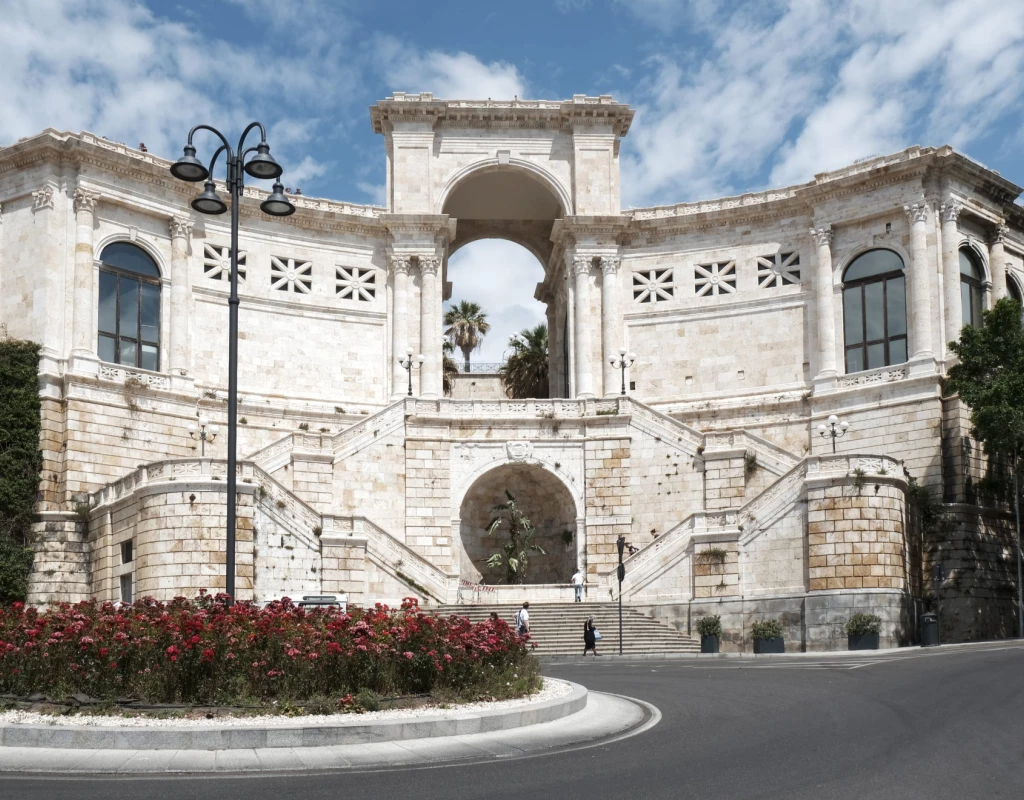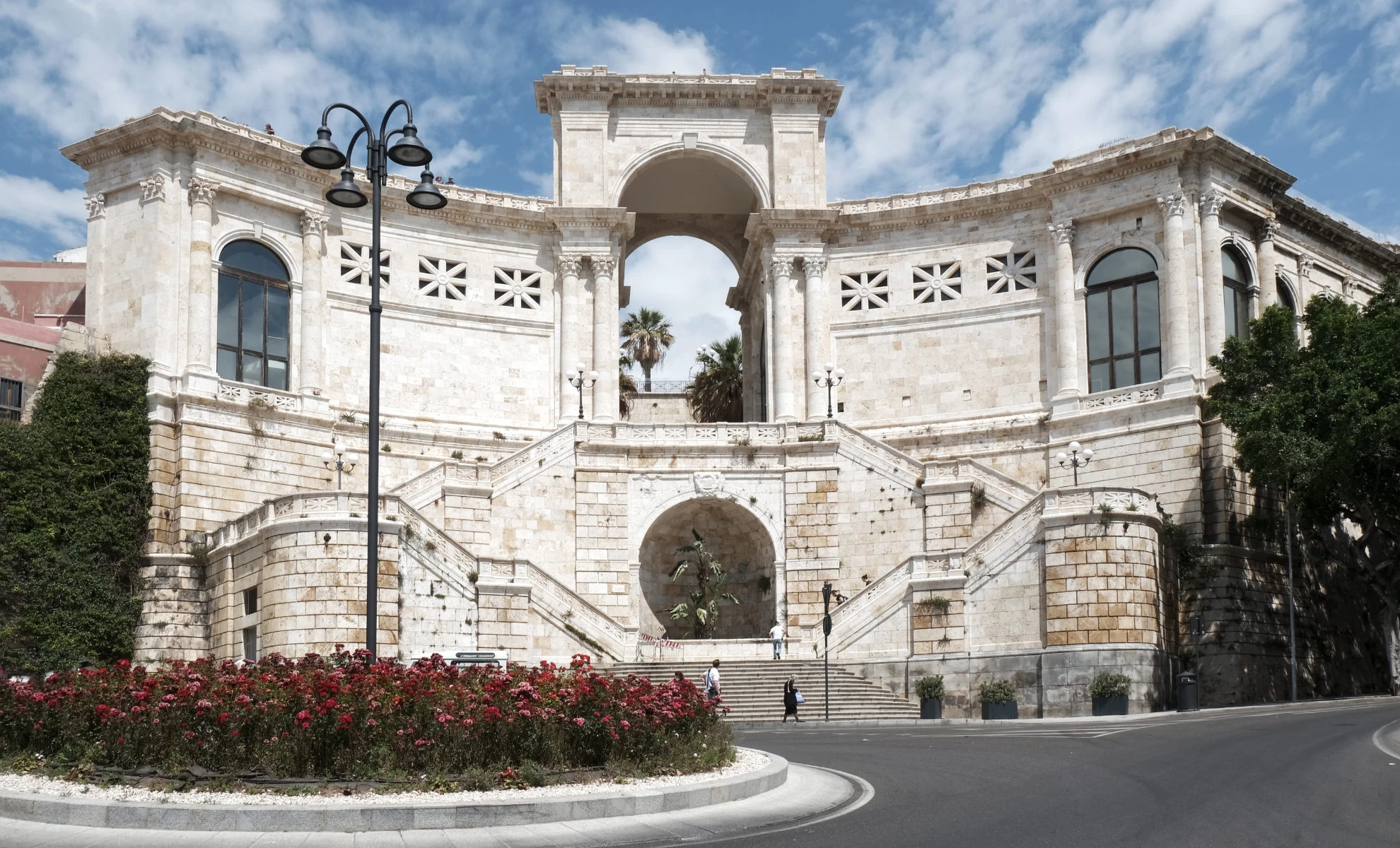The Bastion of Saint Remy is one of the symbols of Cagliari, a scenographic and impressive work from the early 1900s, so called thanks to the first Piedmontese viceroy of the island. A building that fully responds to the canons of Umbertine and Risorgimento architecture: elegant paved streets that recall the solemn arcades of Turin, the Savoy capital.
The Bastion that today overlooks the Umberto I terrace was planned by the engineers Giuseppe Costa and Fulgenzio Setti, who worked on the basis of the mid-nineteenth-century designs of the architect Gaetano Cima. The work began only in 1896 in the Castello district, still the ancient center of Cagliari, just outside the narrow streets and steep stairways that climb the hill.
Ph. Gianfranco Zedda
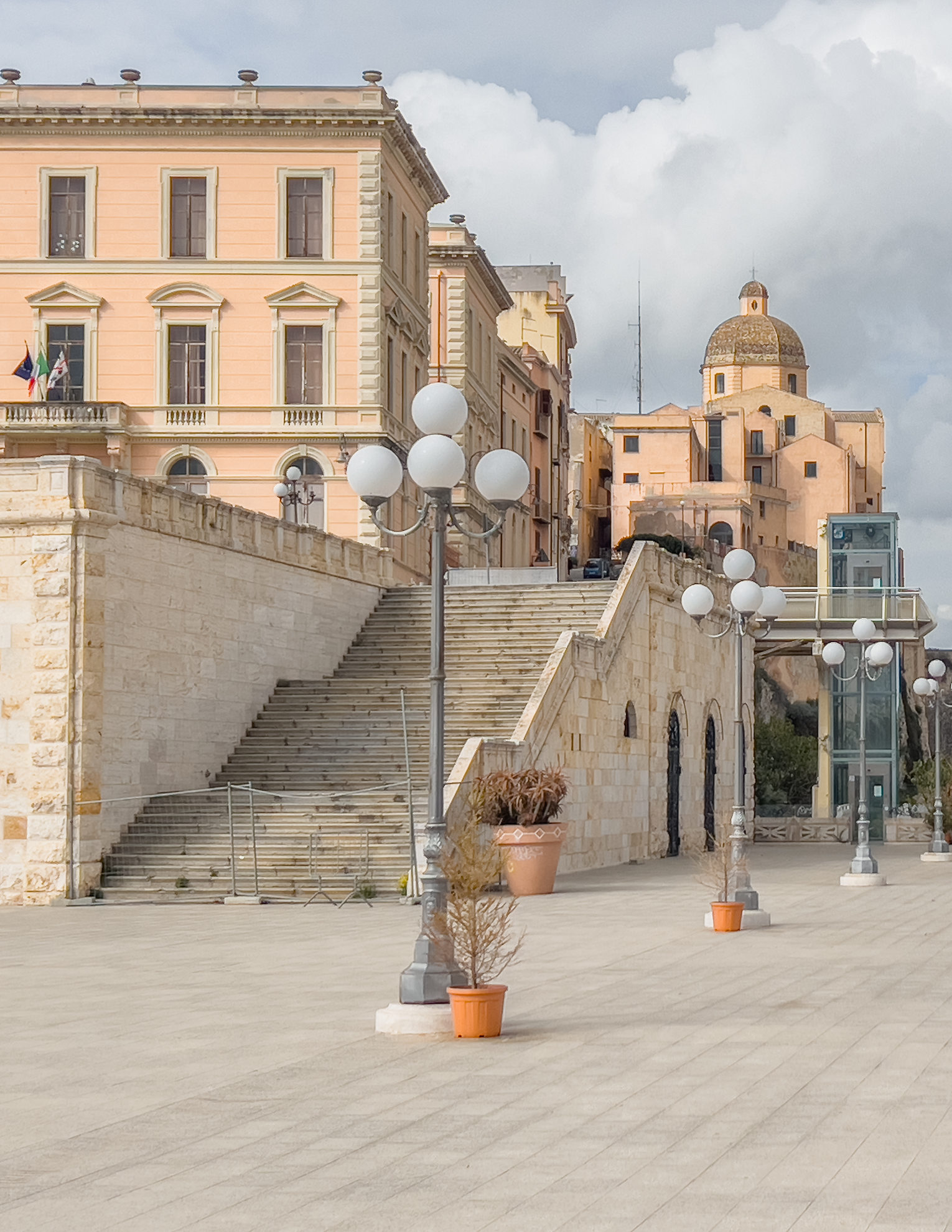
Ph. Gianfranco Zedda
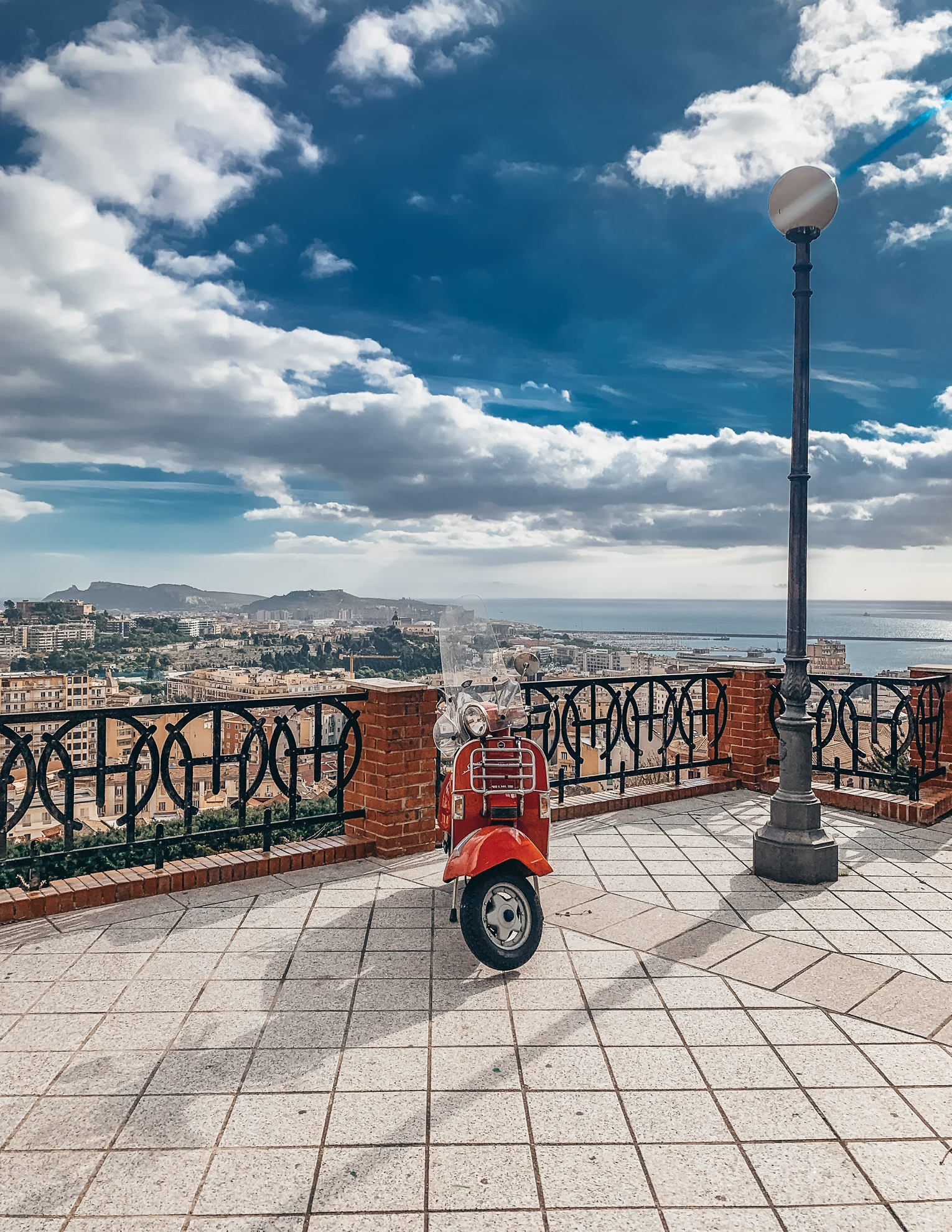
The architectural style is that of the Risorgimento and reflects the neoclassical canons. The white and yellow limestone columns, surmounted by Corinthian-style capitals, surround the majestic double-flight entrance staircase. From here you enter the overhanging covered walkway, today the main exhibition site of the city. The rooms, according to the canons of the late nineteenth century, are very large and bright, able to create respect in the visitor. The materials used for the construction, the size of the corridors and rooms: everything had to have that royal imprint so loved by the Piedmontese monarchs.
Going towards the higher floors you arrive at the Umberto I terrace. From here you can enjoy one of the most evocative views of Cagliari: the historic district behind, the sea in front and the wide road that goes to the port.
Ph. Gianfranco Zedda
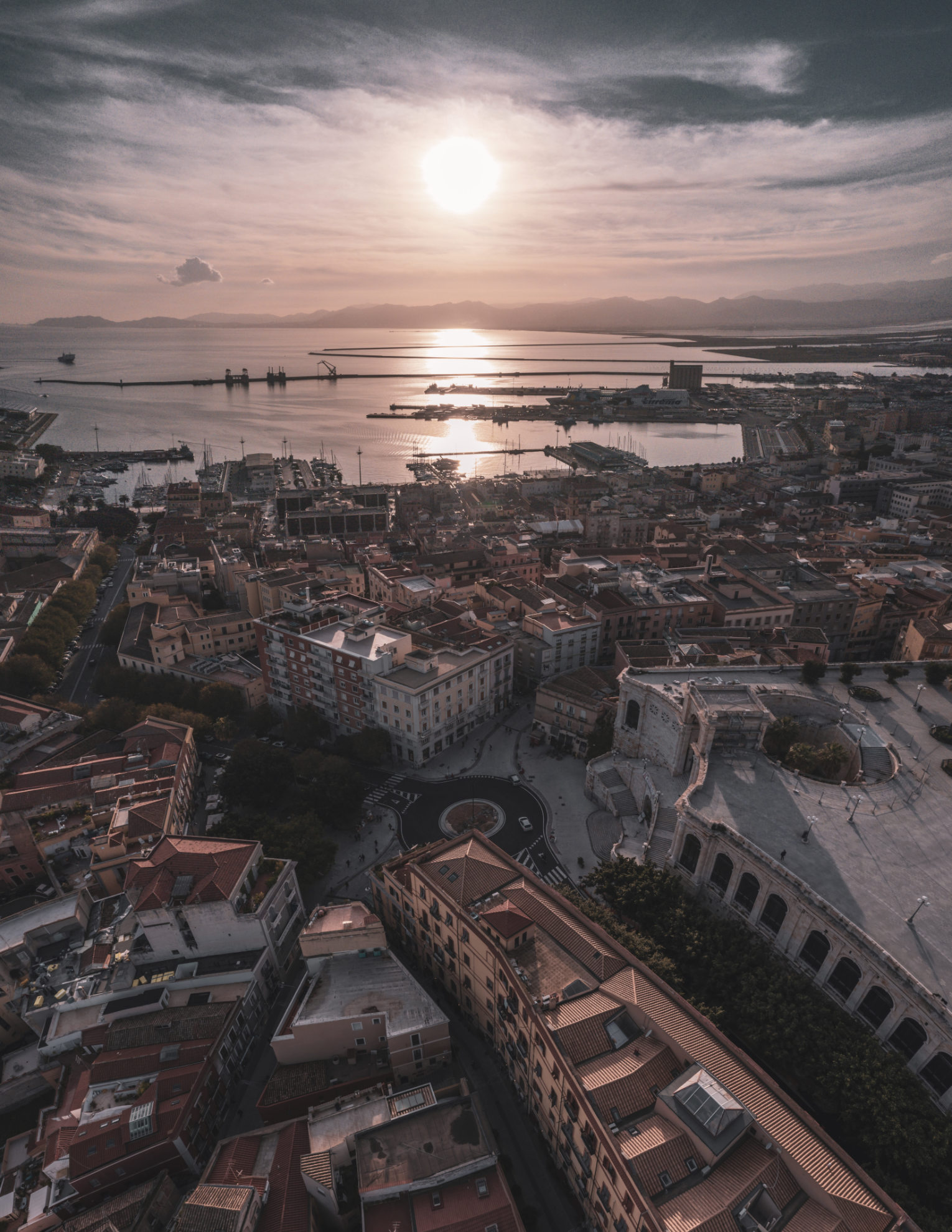
Ph. Gianfranco Zedda
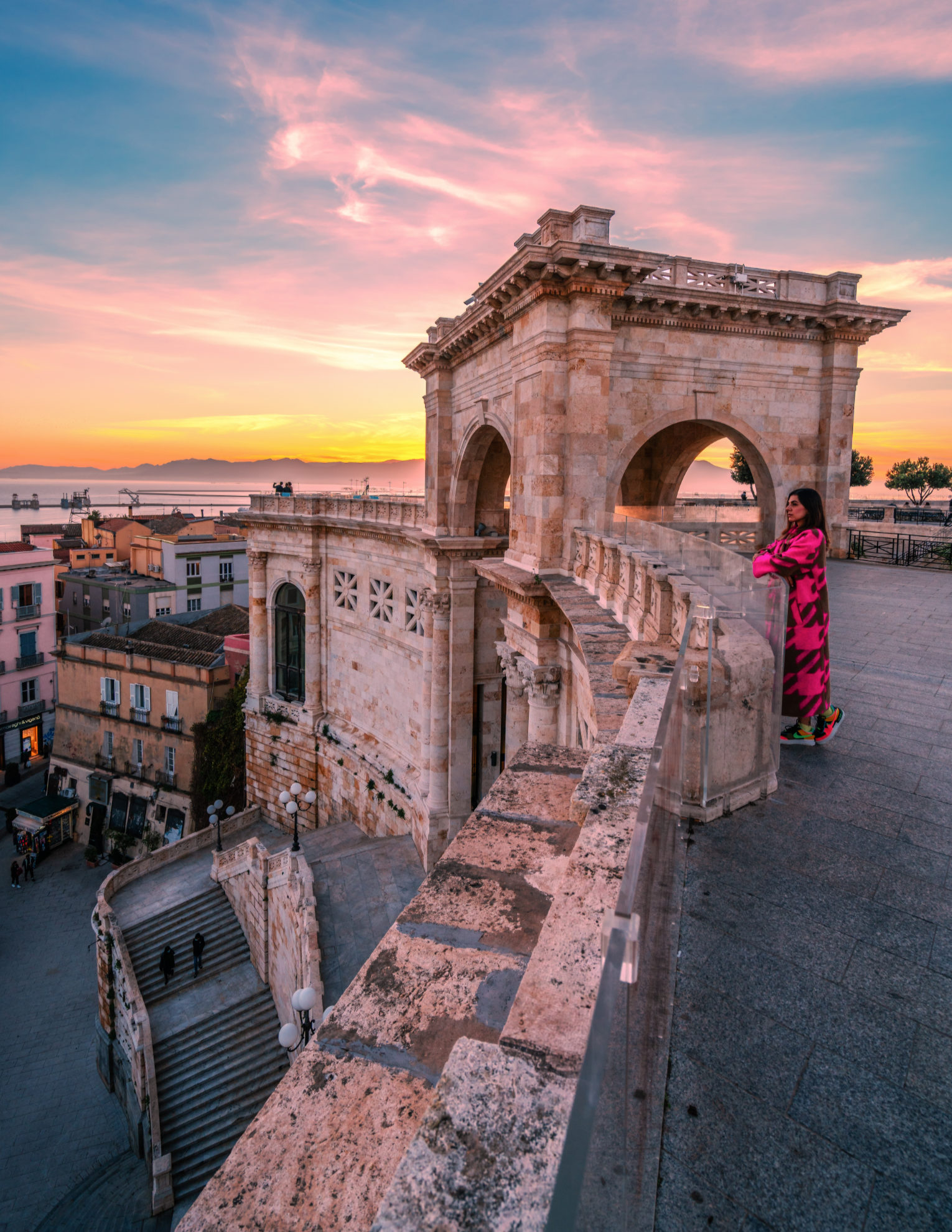
The Bastion is so called for its austere appearance and because it is built on the ancient defensive curtain of the medieval city. It was here that the people of Cagliari were supposed to defend the center of Castello from attacks from the sea. A function that the Bastion never lost until the twentieth century, when it served as a refuge for the inhabitants during the bombings of the Second World War.
A monument that responded to that idea of renovation that the Italian monarchy carried out in many cities, expanding the spaces and streets beyond the network of ancient alleys.
